Featured Comment:
“Hi , Loving this. This is the most comprehensive and step by step instruction for Unagi kabayashi. Loving it Ummm yummy”
– Francis
What is Unagi Donburi (Unadon)?
Unagi donburi is simply a bowl of cooked rice topped with grilled eel coated in a sweet, sticky glaze and is one of Japan’s most common summer traditions. It is topped with a special unagi sauce poured over the rice, grilled eel placed on top of the bowl, and then poured over again.
The basic Japanese way to eat is to eat it with sansho (Japanese pepper) as a condiment. I personally think unagi don is not complete without sansho.
Despite the name “donburi,” round lacquer bowls are often used instead of the ceramic bowls usually used for donburi.
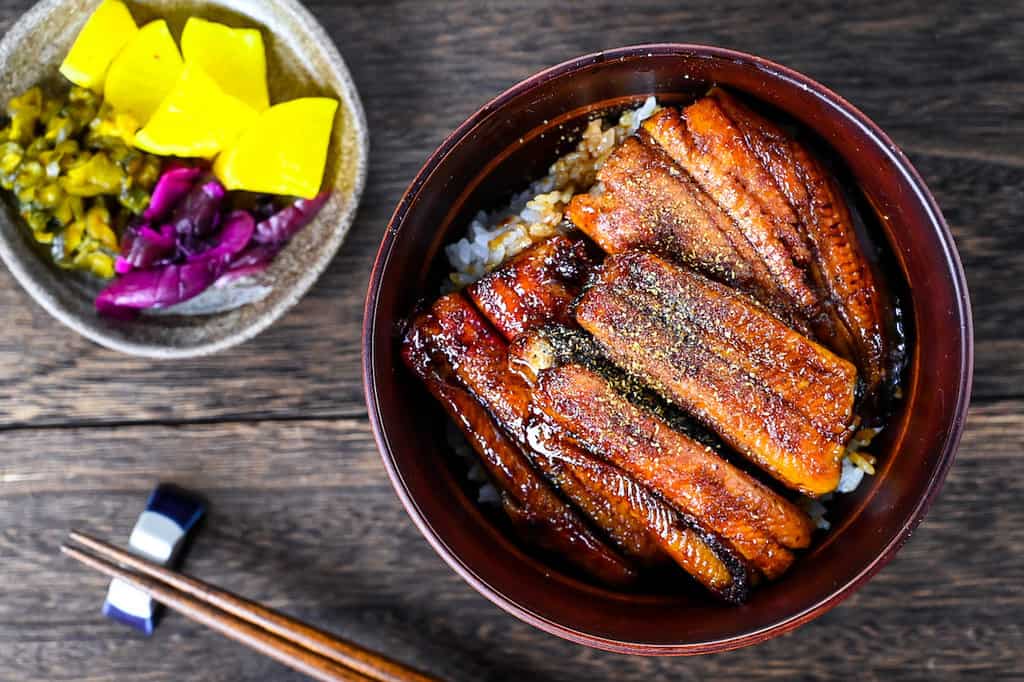

How I Developed This Recipe
It’s pretty unusual to prepare eels at home, including cutting raw eels and making homemade unagi sauce. This is even the case in Japan, where grilled eels are typically a restaurant delicacy.
But that’s part of the fun of cooking from scratch. That’s why I’m so passionate about developing recipes and cooking. I had a blast developing this unadon recipe, and the result was incredible.
If you get the chance to get your hands on some fresh eels, I really recommend giving this recipe a go at home for a truly unique and satisfying experience.
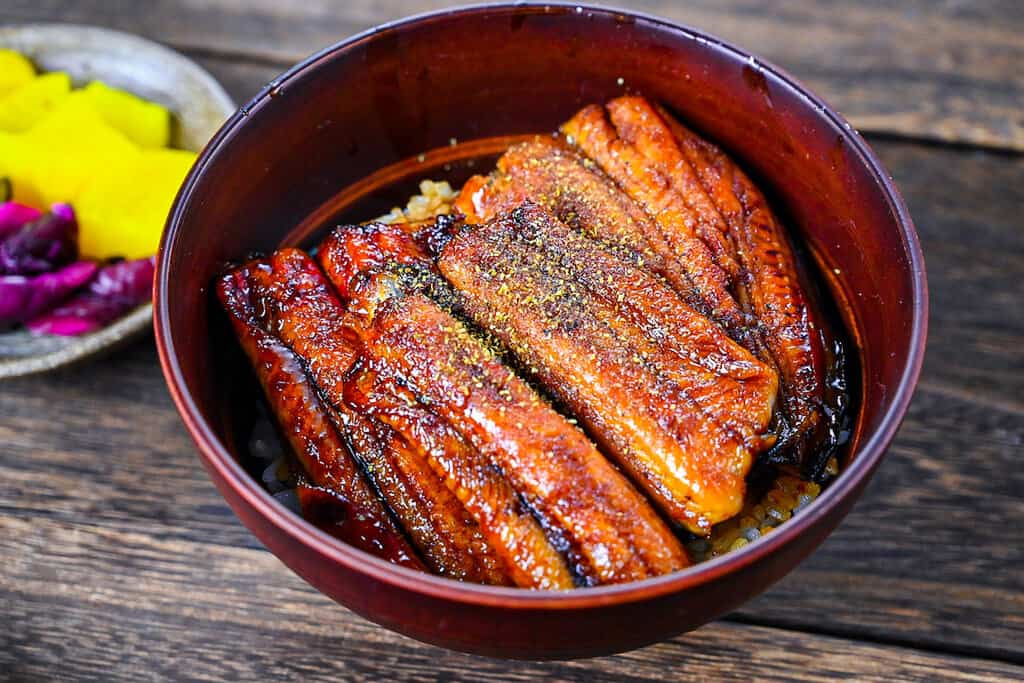
Types of Eels to Use
It is said that there are 18 species of eels living in the world, among which four species are eaten in eel dishes in Japan.
- Japanese eel (Anguilla japonica)
- Giant long-finned eel (Anguilla marmorata)
- American eel (Anguilla rostrata)
- European eel (Anguilla anguilla)
As you might have guessed, Japanese eel is the most commonly eaten in Japan. Most eels available in Japan today are not wild eels, but farmed eels, mainly domestic, Chinese, and Taiwanese eels.
Eels labeled as domestic are Japanese eels, which are generally finer, have less odor and fat, and have slightly tighter flesh. On the other hand, eels from China are mostly European eels, which are thicker, shorter, and have more fat, and are generally available at a lower price.
Either way, eels are considered a luxury item regardless of where they’re from.
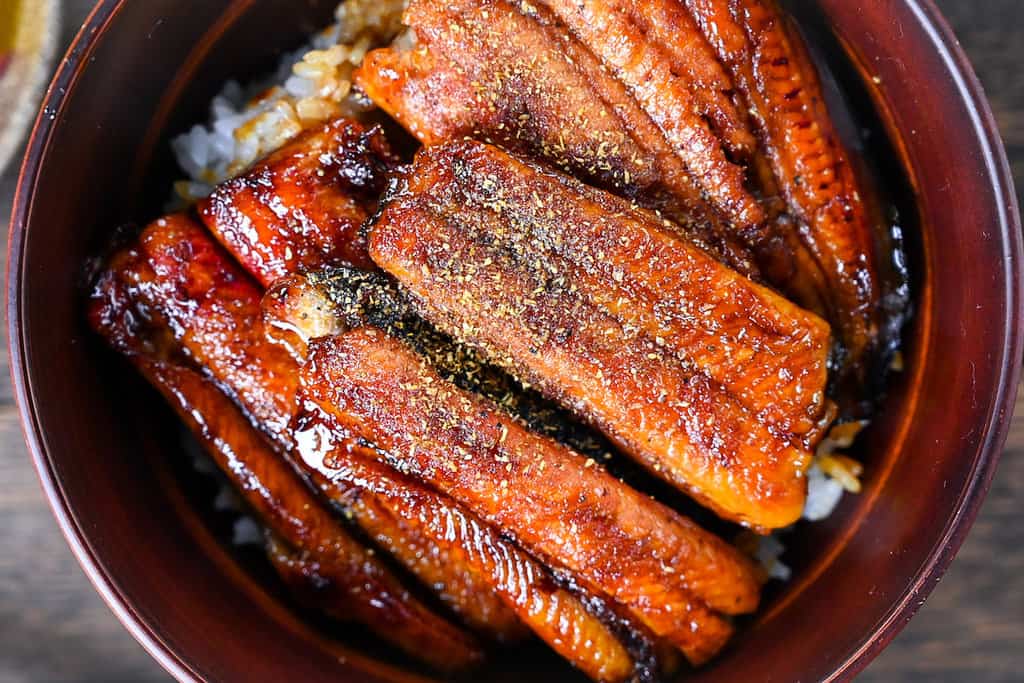
Visual Walkthrough & Tips
Here are my step-by-step instructions for how to make Unagi Donburi at home. For ingredient quantities and simplified instructions, scroll down for the Printable Recipe Card below.
If you prefer to watch the process in action, check out my YouTube video of this recipe for a complete visual walkthrough!
When you buy eels, I recommend purchasing them with the bones and insides already removed. (Unless you’re extremely skilled with filleting fish!)
As you probably guessed, the surface of eels is extremely slippery and difficult to cut. To avoid them slipping off the chopping board or slipping the knife and getting injured, you need to cut them in a certain way.
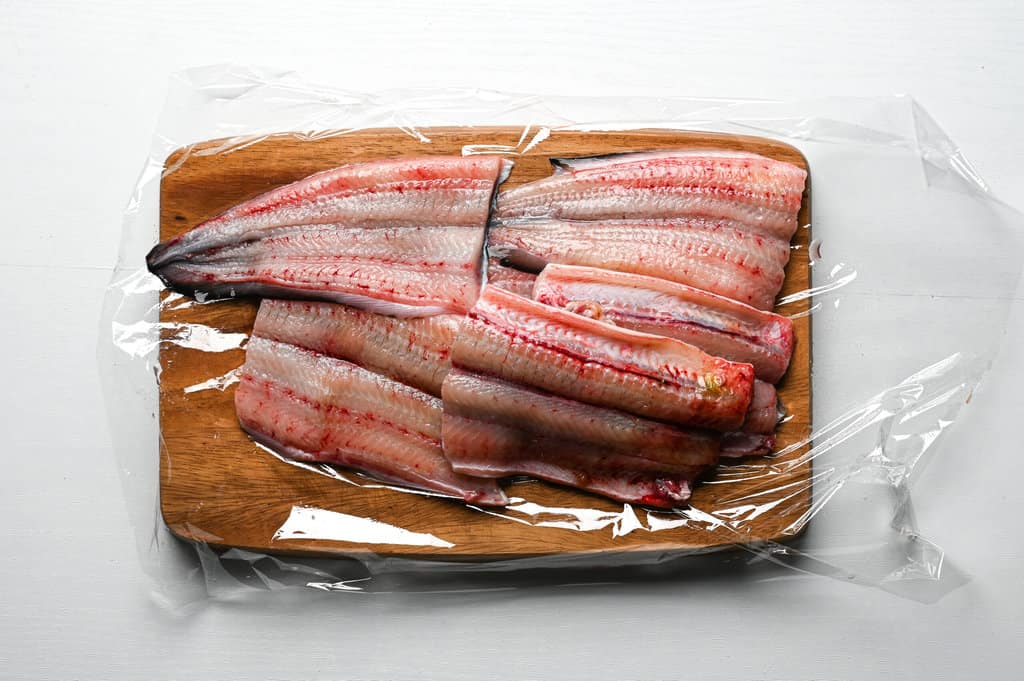
You might think plastic wrap makes the situation worse, but here is the trick. When you cut eels, rather than moving the knife, hold the knife still and move the eel backward and forwards underneath the stationary blade. The plastic wrap will help you move the eel around more smoothly.
Depending on the size of the eel, cut it into 2 or 3 pieces. Mine was quite big, so I cut 2 eels into 6 fillets. And, of course, make sure to wash eels under cold running water beforehand, too.
Of course, you can directly grill the eels, but this is one trick to make your eels extra tender, fluffy, and soft. This is actually a common procedure in Kanto (Eastern Japan) region. On the other hand, Kansai (Western Japan) style puts eels directly onto a grill.
It is also said that the reason for steaming eels before grilling them with sauce was to remove excess fat since eels from the Kanto region had more fat than eels from the Kansai region.
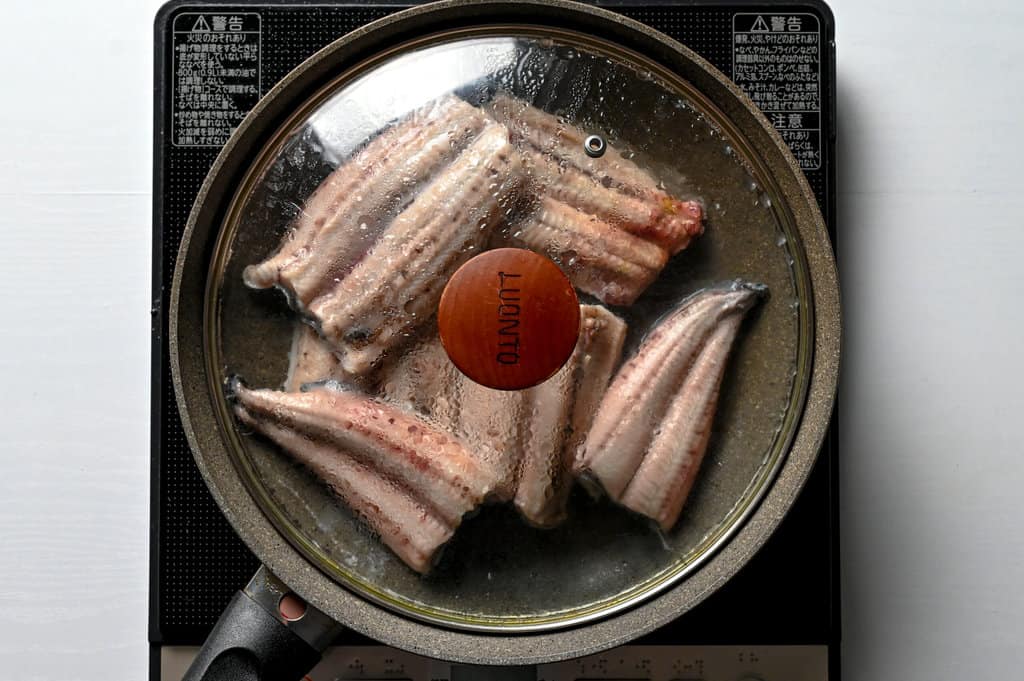
In an ideal world, a steamer would be used for steaming eels. However, because it takes a long time and I don’t have a steamer, I simplified the process by steaming the eel with sake on medium-low heat for about 3 minutes.
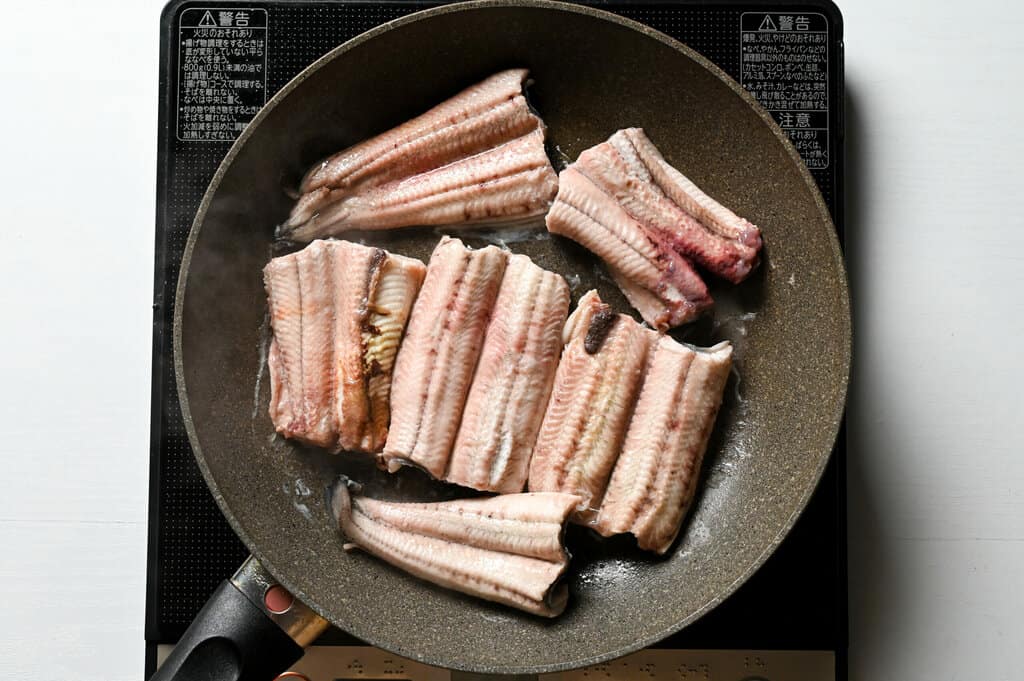
Although you can follow the exact steps to make unadon at a BBQ (when grilling on a BBQ or over charcoal, turn over early because the heat is a lot higher and the meat tends to burn easily), this recipe is specifically for people who want to make unadon at home.
Firstly, because we use a lot of sauce, we line aluminum foil on the grill. Make sure to preheat the grill for 5 minutes before placing the eel inside.
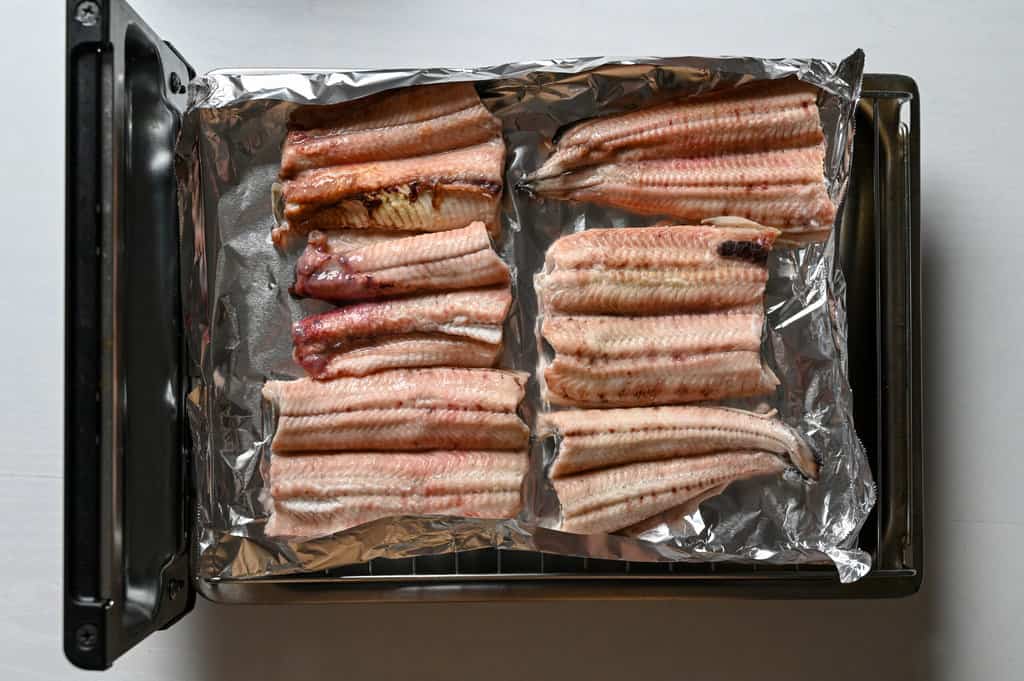
I know a general rule of thumb is skin side up when it comes to grilling fish, but I put skin side down for eel. The reason is eel shrinks very easily, so if the skin side is up first, the whole fish shrinks and becomes easy to break and fall apart.
We cook the fleshy side for 6 minutes on a medium-high setting.
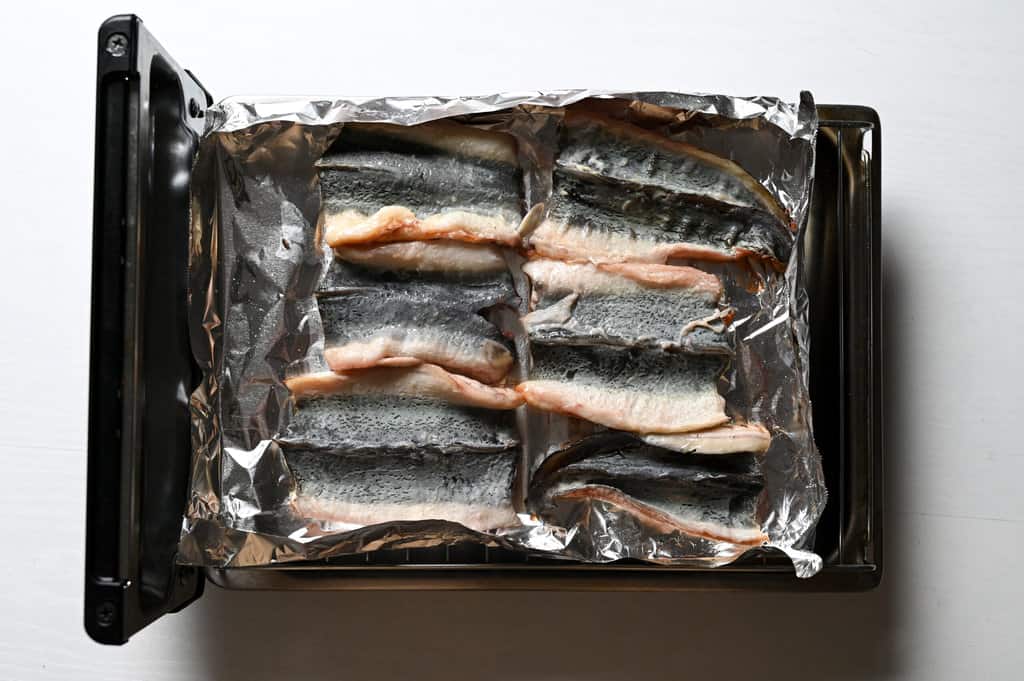
After 6 minutes, flip them over and put them back on the grill, then grill for another 5 minutes on the same setting.
When unagi is cooked directly over a charcoal grill, charring adds a delicious smoky flavor. However, if the skin becomes completely charred (turning black and smelling burnt) on a home grill, it will be dry and bitter. The 5-minute cooking time is only a rough guide; heat intensity varies depending on your grill. Be sure to check the condition and aroma periodically to achieve the perfect result.
Once the eels are grilled, we apply sauce to them. By the way, we call this point (grilled eel without sauce) shirayaki (白焼き). To penetrate the sauce into the eels, we need to repeat the sauce process over and over, essentially basting. In this case, we brush the sauce 3 times on each side.
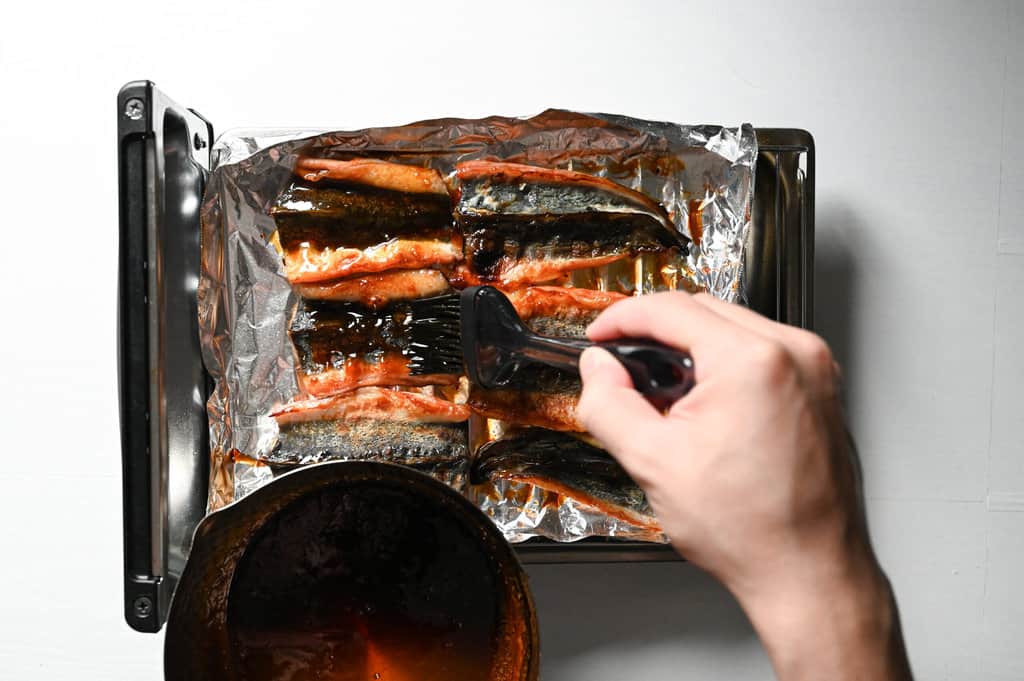
Using a brush, generously apply the sauce on the surface. Once coated, put them back in the grill and grill for 30 seconds with a high setting. If you continuously grill them for over 30 seconds, they start to burn, so be careful! (This is due to the high amount of sugar in unagi sauce.)
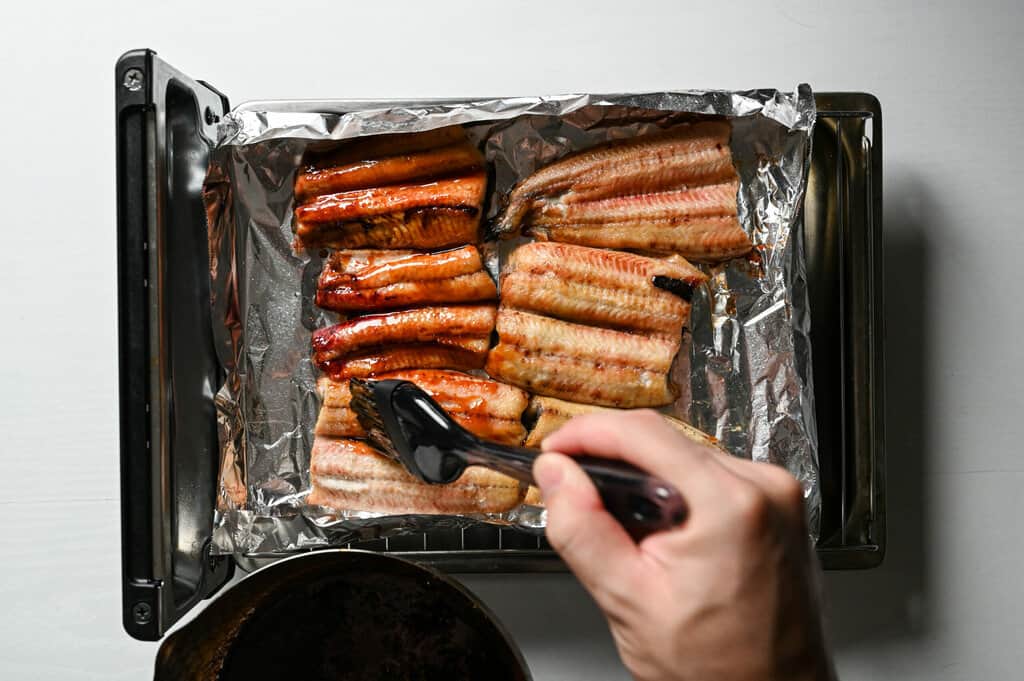
After the first 30 seconds, flip them over and apply the sauce as we did on the skin side. Then, put them back again and grill them for 30 seconds.
After that, repeat the same process for 2 more rounds.
Assembling unagi donburi is extremely easy, but I have one bonus tip. Apply the leftover unagi sauce to the top of the rice to help make the rice underneath extra flavourful and reduce waste!
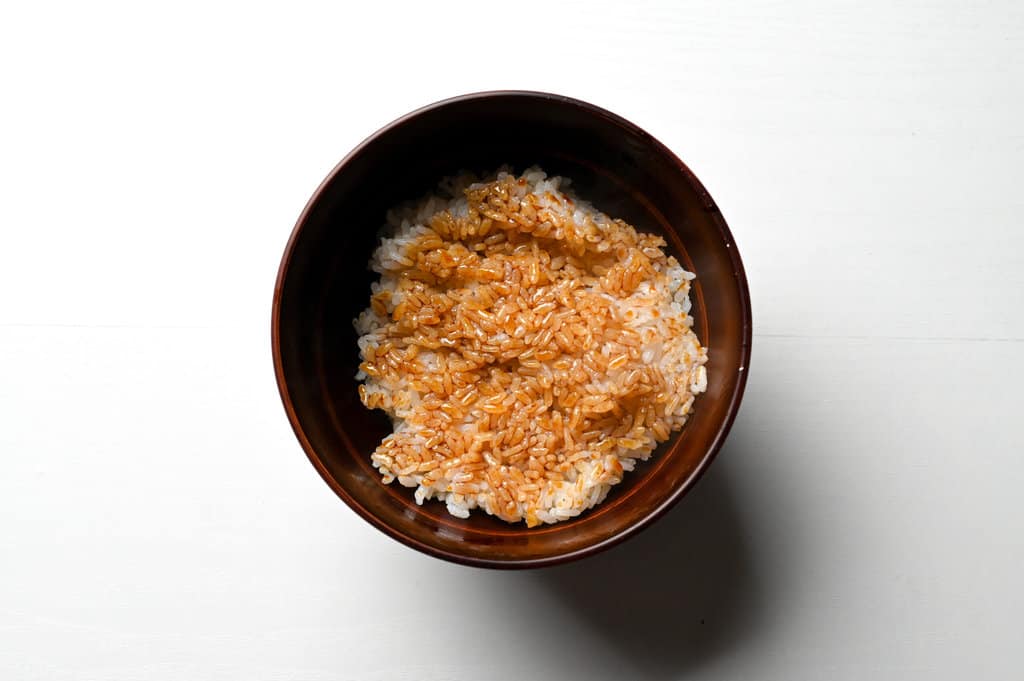
After that, simply add the cooked unagi on top.
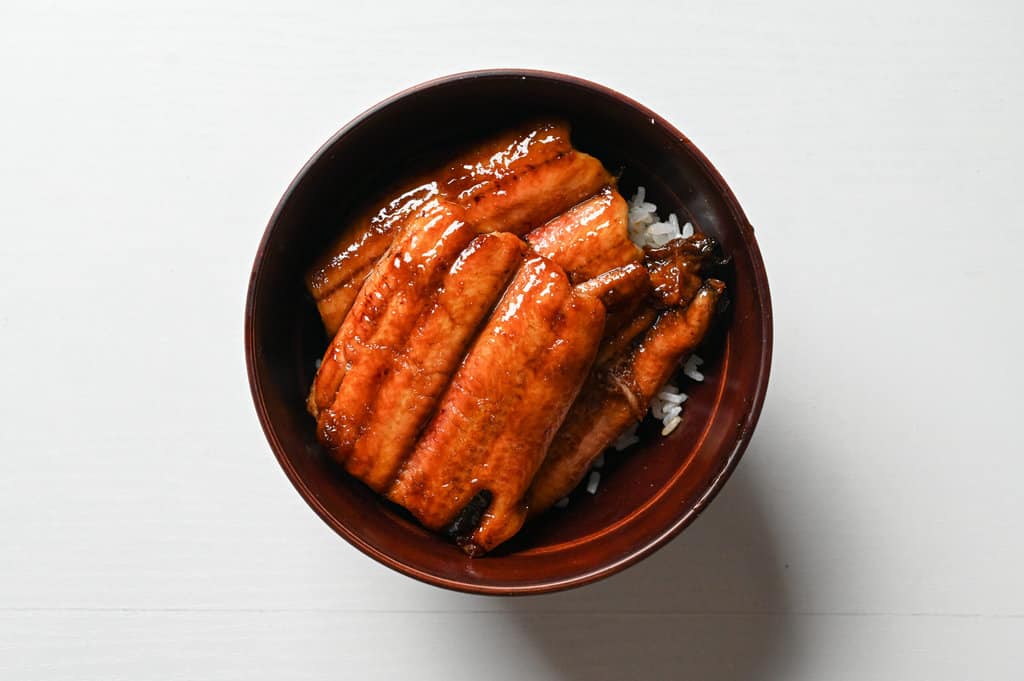
For me, unadon is not complete without sansho so that I will add sansho powder, too!
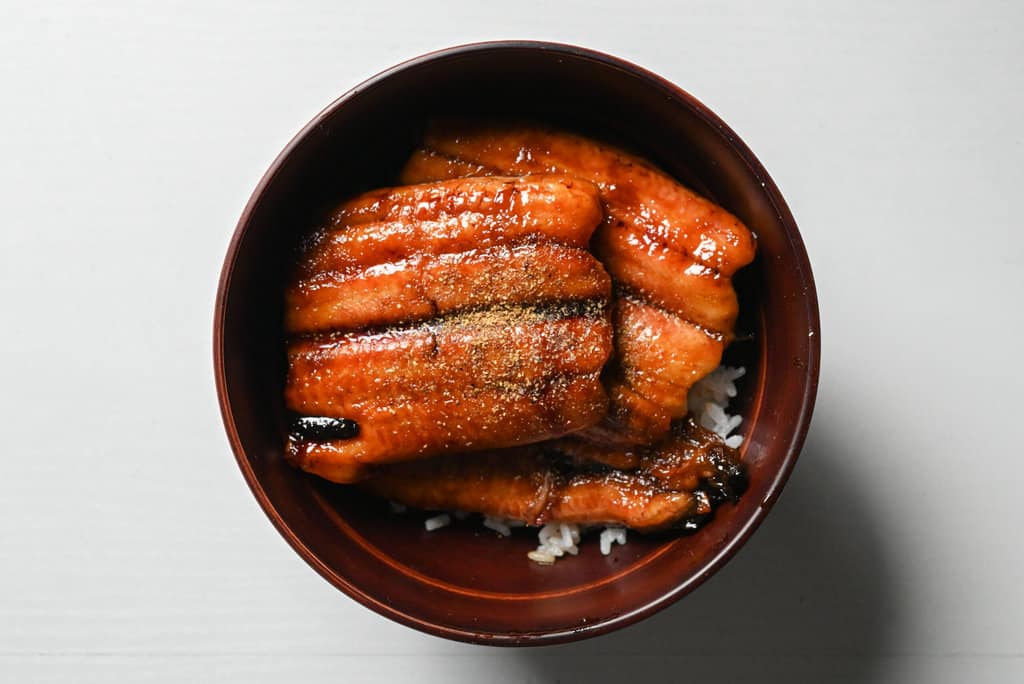
How to Store
If you use fresh eels, it’s not recommended to freeze them as they are. Freezing eels fresh will result in a deteriorated texture and taste. Because it is an expensive high-quality fish, it should not be stored in such a way.
Even if you have too much eel, cook them all until shirayaki (cooked but sauce is not applied) point. Frozen shirayaki eel can be stored for up to one month.
If you want to defrost shirayaki, place it in the refrigerator from the freezer beforehand and defrost it gradually instead of rushing it.
Then steam them in a pan with sake or lightly grill them in the oven or on the grill. The meat will be fluffier when steamed, and more crispy when grilled or in the oven.
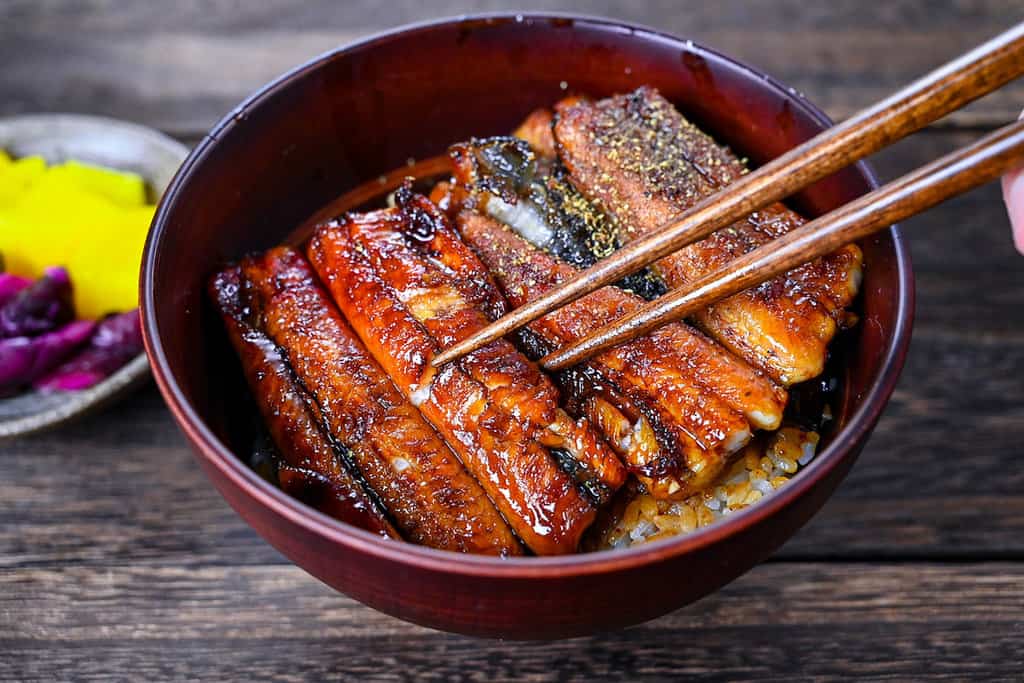
FAQ
Here are answers to frequently asked questions I have received across all platforms, including here, YouTube, Instagram, and Pinterest. If you have any questions, feel free to send them to me anytime! It will be a big help for everyone in this community!
The history of eating eels in Japan actually dates back thousands of years. Evidence of Japan’s eel-consuming culture was discovered during excavations that revealed several shell middens containing traces of eel bones, which are believed to date back as far as 5,000 years ago.
However, it was not until the Edo period (1603-1867) that eel began to take root as a food in earnest. There are various theories about the origin of unagi don, but a book published in 1885 states that it was first made by Okubo Imasuke, a theatrical entertainer who was fond of eels.
The theory goes that it was placed in a bowl on top of the rice and then topped with more rice in order to retain the heat upon delivery. Not only did this method keep the eel hot, but it also tasted great with the rice, and unagi don was born.
In Japan, eels are lined up on supermarket shelves during the summer season with the catchphrase “Doyou no Ushi no Hi” (土用の丑の日), which means “day of the ox in midsummer.” Literally, you can find so many eels in supermarkets around the time, just like how you see so many ehomaki in February.
“Doyou” is the term for the 18-day period immediately preceding the first day of summer, autumn, winter, and spring, and the date changes every year, but the summer one is the well known one for being the time to eat eel. For example, the dates in 2022 are Saturday, July 23, and Thursday, August 4.
The reason for eating eels is that in Japan, there was an old custom of eating foods that start with the letter “U” (e.g., pickled plums (ume), gourd (uri), udon noodles) on “Ushi no Hi” (the day of the ox), which is good for the body, as the body is prone to summer fatigue during the summer Doyou period.
In the Edo period (1603-1867), grilled eels did not sell during summer because they were out of season and people did not want to eat rich food in hot weather. So, eel shops, hoping to boost sales in summer, put up signs saying, “Today is Doyou Ushi no Hi” (today is the day of the Ox), which became the standard for the Doyou Ushi.
In other words, we eat eels on the day due to an analog marketing strategy several hundred years ago.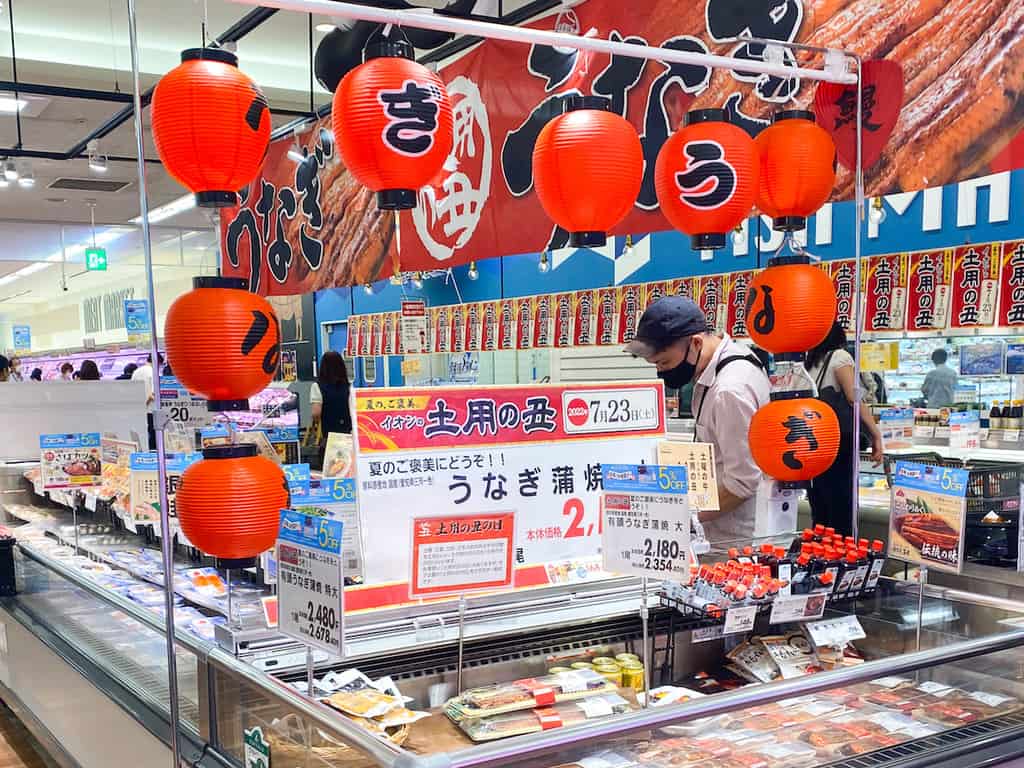
As I mentioned earlier, the most popular way to eat unagi don is with sansho (山椒) Japanese pepper. Native to Japan, this Japanese spice has been used since ancient times and is characterized by its numbing spiciness and refreshing aroma.
It goes extremely well with unagi and unagi sauce and is a must-item for me to enjoy unagi don to the fullest.
You can purchase the exact S&B brand sansho I use on Amazon.
Other than sansho, unagi don is usually served with the following dishes in restaurants:
Suimono (Simple Japanese clear soup)
Japanese style pickles
Additional unagi sauce
Unagi-don and unaju are both served on a bowl of white rice topped with grilled eel and unagi sauce. If you have ever been to unagi restaurants in Japan, you must have seen both of them on the menu. I actually don’t know any places that serve only one kind.
The reason is extremely simple. It’s because the only real difference is how the quantity of eel and how it’s presented, that’s it. Unagi don is served in a bowl, and unaju is served in Japanese lacquerware boxes.
However, even though the taste and quality of the eels are exactly the same, the price is generally higher for unaju than for unagi don. The main reason for this is that unaju requires more eel so that they can be neatly arranged right up to the edge and completely cover the rice. In comparison, rice bowls are round, so the amount of eel needed is undoubtedly smaller.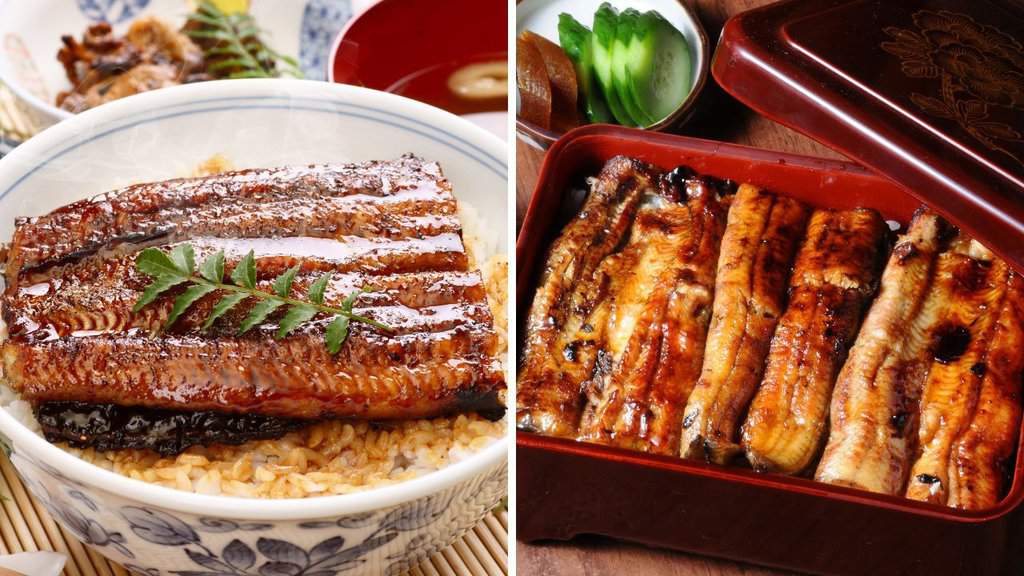
The reason why eels are so expensive is simply because of the shortage of eels. Japanese eels are caught and raised as shirasu eels, which are the young version of Japanese eels, and distributed to restaurants and supermarkets.
The price of this eel has skyrocketed because the catch of young fish has been decreasing year by year. The Japanese eel was even listed as an endangered species IB in June 2014.
Furthermore, in the current stage of aquaculture technology, it is not possible to raise eels other than by catching and raising fry. Because the ecology of eels is still shrouded in mystery, no other production method is possible. For instance, all eels are male when raised normally, and the factors that determine the sex are not yet known. In other words, it is not possible to farm eels from eggs completely.
While making this recipe, I ordered 4 eels directly from the local fishing harbor in a city called “Nishio.” Even before cooking and by direct shipment from the harbor, they cost 8,600 yen (about $65). This means that each portion of the eel cost approximately $16.25.
My grill doesn’t have a temperature setting, and I’ve never done it in the oven, so I cannot say for sure, but I think 220 C (430 F) is a good place to start.
Yes, as long as it’s filleted, you can! Some other popular options are conger eel and catfish!
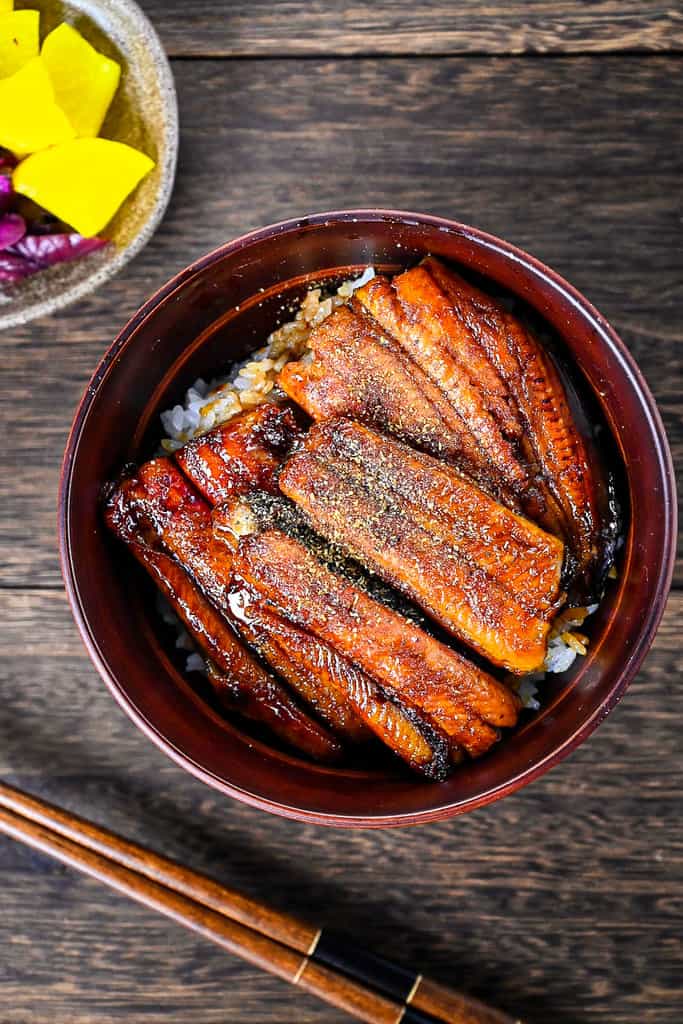
I hope you enjoy this Unagi Don recipe! If you try it out, I’d really appreciate it if you could spare a moment to let me know what you thought by giving a review and star rating in the comments below. It’s also helpful to share any adjustments you made to the recipe with our other readers. Thank you!
More Donburi Recipes
- Marinated Salmon Sashimi Bowl (Salmon Don)
- Garlic Teriyaki Chicken Donburi (Rice Bowl)
- Quick & Easy Yakiniku Don (Japanese BBQ Style Beef Bowl)
- Maguro Zuke Don (Marinated Tuna Sashimi Bowl)
Want more inspiration? Explore my Donburi Roundup Post for a carefully selected collection of tasty udon recipe ideas to spark your next meal!
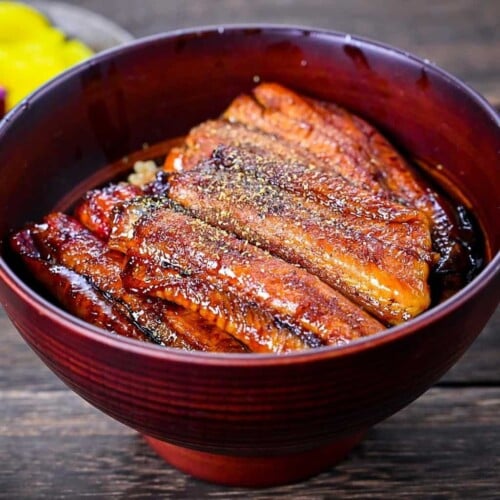
Unagi Donburi (Japanese Grilled Eel Rice Bowl)
Ingredients
Unagi Sauce
- 3 tbsp turbinado sugar coarse light brown (zarame)
- 1 tsp dark brown sugar muscovado or similar
- 5 tbsp sake
- 5 tbsp mirin
- 5 tbsp Japanese soy sauce (koikuchi shoyu)
Unagi don
- 300 g filleted eels 1 fillet is approx 150g
- 2 tbsp sake
- 2 portions cooked Japanese short-grain rice see here for how to cook Japanese rice
- Japanese sansho pepper optional
My recommended brands of ingredients and seasonings can be found in my Japanese pantry guide.
Can’t find certain Japanese ingredients? See my substitution guide here.
Instructions
Unagi Sauce
- Add 3 tbsp turbinado sugar and 1 tsp dark brown sugar to a saucepan. Place the pan on the stove and turn on the heat to medium-high.

- Once the sugar starts to melt, add 5 tbsp sake and 5 tbsp mirin. Bring to boil and allow to cook for 1-2 minutes, stirring occasionally.

- Add 5 tbsp Japanese soy sauce (koikuchi shoyu) and turn down the heat to simmer.

- Simmer until thickened slightly (about 10 minutes). Stir occasionally to prevent the sugar from burning. Remove from the heat and allow to cool while preparing the eel.

Unagi don
- Wash 300 g filleted eels with cold running water. Cover a chopping board with a sheet of plastic wrap and place the eel on top. Cut each eel into 2-3 pieces by pressing a sharp knife into the area you want to cut, and pushing the eel back and forth over the plastic wrap.

- Place the eel in a cold frying pan with the skin side down and add 2 tbsp sake.

- Turn on the heat on medium-low and steam for 3 minutes with the lid on. While it's steaming, preheat the grill/broiler on medium-high for 5 minutes.

- After 5 minutes, remove the pan from the heat and transfer the eel skin side down to a wire rack lined with aluminum foil. Grill for 6 minutes.

- Turn the eel over and grill the skin side for 5 minutes or until lightly charred.

- Apply the sauce generously but evenly over the skin and grill for 30 seconds.

- Turn the eel over and apply the sauce on the meat side and grill for 30 seconds. Repeat brushing and grilling each side twice more (3 times on each side).

- Dish up 2 portions cooked Japanese short-grain rice and brush the top with the leftover sauce.

- Place the eel on top and sprinkle with Japanese sansho pepper.

- Enjoy!

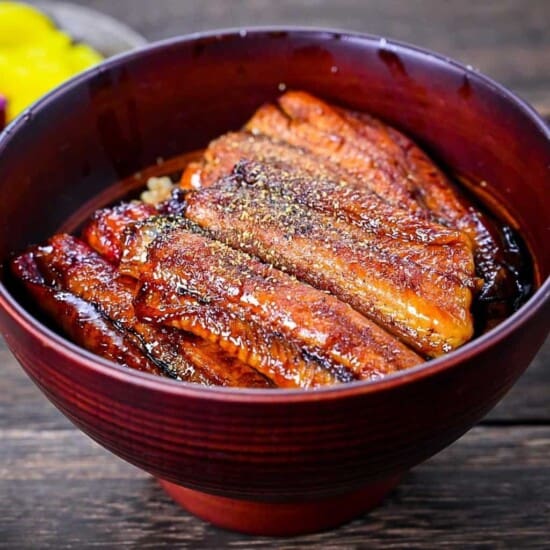




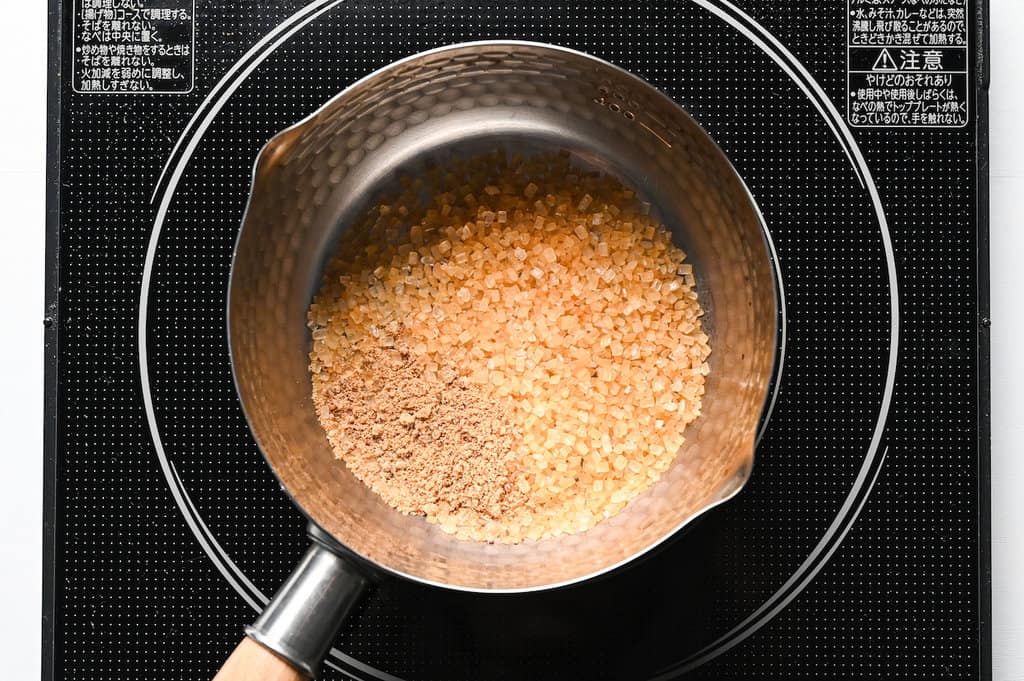
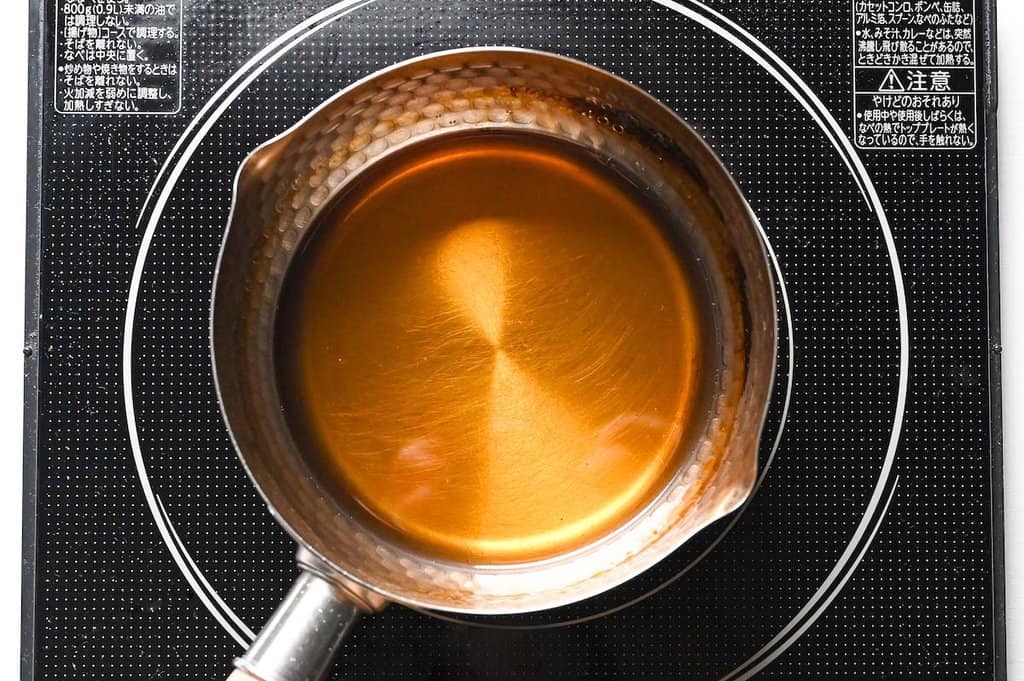
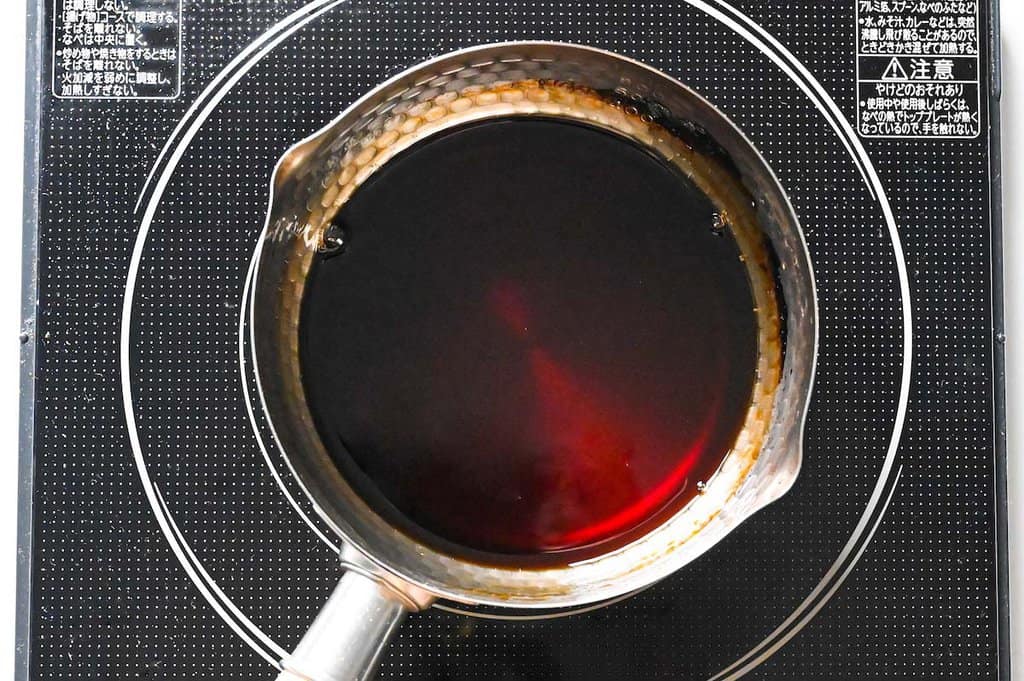
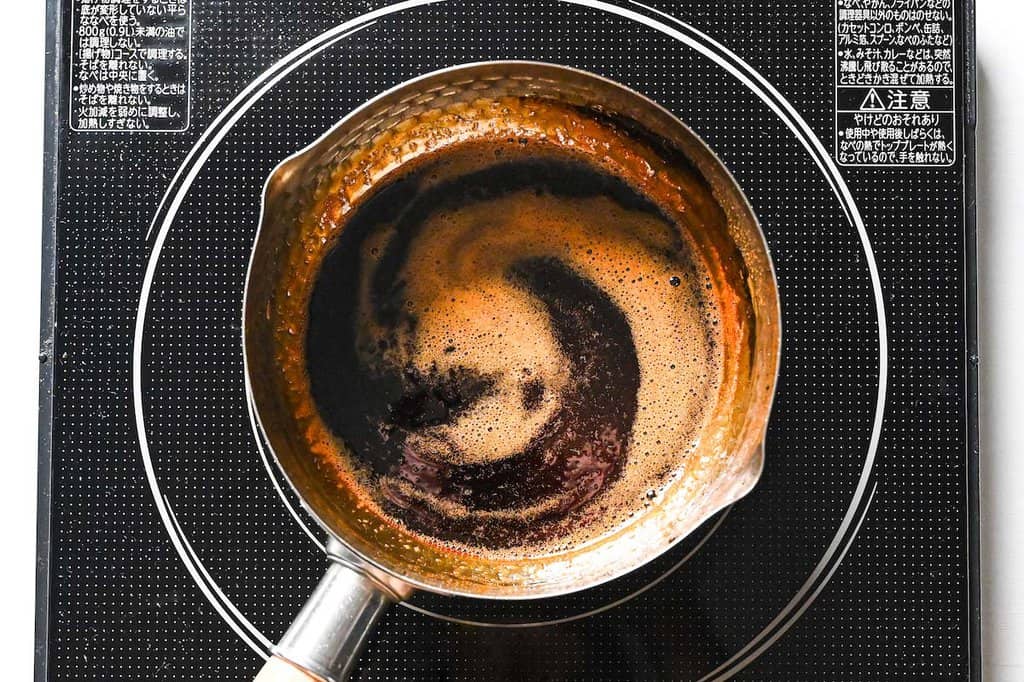

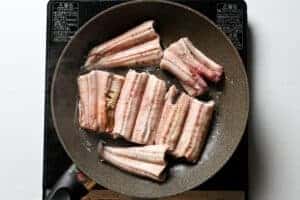
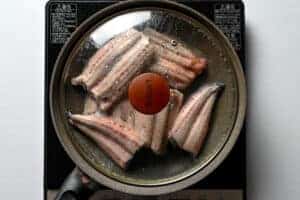

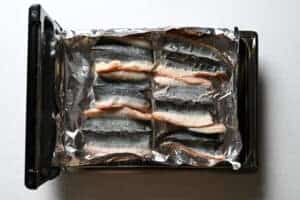
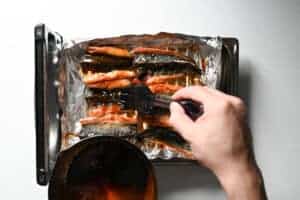

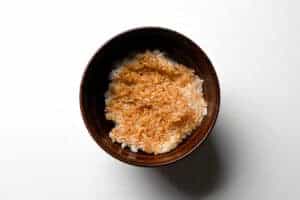
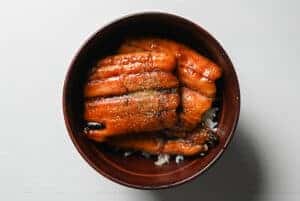
Hi ,
Loving this.
This is the most comprehensive and step by step instruction for Unagi kabayashi.
Loving it Ummm yummy
Preparing tonight ( with spanish Mackerel fillet, cheaper and since unable to get Eel at Singapore)
Thank you very much
Hi Francis,
Thank you so much! I’m interested in how it tastes with mackerel, let us know how it goes.
Hope you enjoy the recipe!
Made your sauce and cooked the unagi your way. Also cooked some Japanese eggplant in same way. Turned out wonderful. Home cooking is the way to go. Eel was from a small company in Maine, American Unagi. Thanks for all the work you do, you have an awesome website.
Hi Kat,
Thank you for your kind words and sharing your experience!
I’ve just checked out the American Unagi website, and it was a very interesting read.
I really loved to see their passion towards locally raised unagi!
Yuto
Making this for a friends birthday! I’m super excited to make it. (Purin for dessert as well.) I hope she enjoys it. It seems to be a very clear recipe to you, thanks for that! I’ll make sure to check out other recipes you have written. Thank you again. I apologize if my writing is hard to understand, English is still new. Thank you!
Hi 재원,
Thank you for the comment and your kind words! I hope everything will turn out great on her birthday! 🙂
Yuto